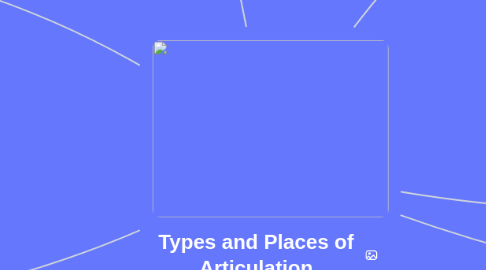
1. Bilabial
1.1. Bilabial consonants occur when you block/constrict airflow out of the mouth by bringing your lips together.
1.2. English contains the following three bilabial consonants:
1.2.1. /p/ as in “purse” and “rap“ /b/ as in “back” and “cab“ /m/ as in “mad” and “clam“
2. Post-Alveolar
2.1. Post-alveolar consonants are those that occur when the tongue blocks or constricts airflow at the point just beyond the alveolar ridge.
2.2. The post-alveolar English consonants are as follows:
2.2.1. /ʃ/ as in “shot” or “brash” /ʒ/ as in “vision” or “measure” /tʃ/ as in “chick” or “match” /dʒ/ as in “jam” or “badge“
3. Glottal
3.1. Glottal consonants aren’t actually consonants; they just play consonant roles in the language.
3.2. English, the following things happen at the glottis:
3.2.1. /h/ as in “hi” and “Bahamas.” Say these words and notice how you’re not actually constricting or blocking airflow for this /h/ sound.
4. Velar
4.1. You make Velar Consonants when you raise the back of your tongue to the velum to block or restrict airflow.
4.2. English has the following velar consonants:
4.2.1. /k/ as in “kite” and “back“ /g/ as in “good” and “bug“ /w/ as in “wet” and “howard”
5. Manners of Articulation
5.1. Nasal
5.2. Stop
5.3. Affricate
5.4. Fricative
5.5. Approximant
5.6. Lateral
5.7. Labio-dental
5.7.1. Labio-dental consonants occur when you block/constrict airflow by curling your lower lip back and raising it to touch your upper row of teeth.
5.7.2. English contains the following two labio-dental sounds:
5.7.2.1. /f/ as in “fro” and “calf“ /v/ as in “vine” and “have”
6. Dental consonants occur when you block/constrict airflow by placing your slimy tongue against your upper teeth.
7. Alveolar
7.1. The alveolar ridge is where your teeth meet your gums. You create Alveolar consonants when you raise your tongue to the alveolar ridge to block or constrict airflow.
7.2. The English alveolar consonants are as follows:
7.2.1. /n/ as in “no” and “man“ /t/ as in “tab” and “rat“ /d/ as in “dip” and “bad“
8. Dental
8.1. English contains the following two labio-dental sounds
8.1.1. /θ/ as is “thick” and “bath“ /ð/ as in “the” and “rather”
9. Palatal
9.1. You create Palatal consonants when you raise the tongue to this point and constrict airflow.
9.2. English has only one palatal consonant:
9.2.1. /j/ as in “yes” and “bayou”
